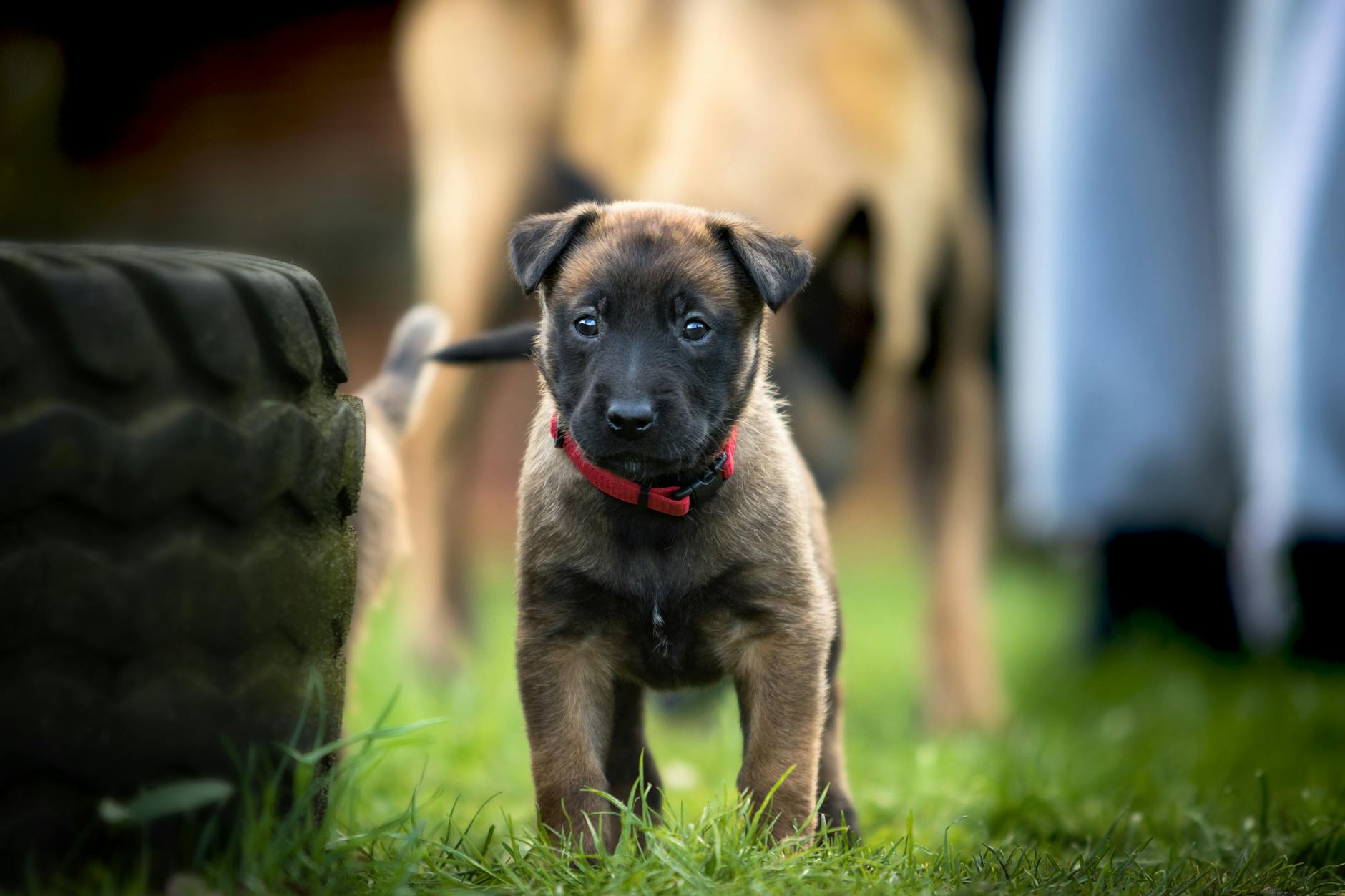How to Protect Australia's Native Wildlife with Sustainable Pet Training Methods

Understanding Native Wildlife
Sharing our suburban spaces with Australia's unique creatures is a privilege, yet domestic pets can unknowingly pose threats to these native habitats. As an eco-friendly enthusiast from Brisbane, I'm well aware of the delicate balance required to conserve our environment, as seen through projects along the Brisbane River. Protecting and understanding our native wildlife ensures that this balance is maintained for future generations.
Key Species to Protect
Australia boasts a rich tapestry of wildlife, including kangaroos, koalas, and a multitude of bird species. Should you visit D'Aguilar National Park, you'll witness firsthand the efforts being made to protect these iconic animals. It's essential for us, as pet owners, to be mindful of these inhabitants and take precautions to minimise our pets' impact on their environments.
Threats from Domestic Pets
Domestic pets, while beloved companions, can inadvertently disrupt local ecosystems. Cats and dogs, for instance, might chase or harm wildlife, causing stress or injury. Tools like invisible dog fence can help contain pets within safe boundaries without compromising their freedom, thereby reducing the likelihood of them disturbing local flora and fauna.
Importance of Biodiversity
Biodiversity is crucial for the resilience of natural ecosystems. Sustainable pet training methods, such as using training collars dogs or introducing comforting items like snuggle puppy, can help manage your pet’s behaviour, ensuring they coexist peacefully with local wildlife. By fostering this coexistence, we support conservation efforts, mirroring those at the Lone Pine Koala Sanctuary, and contribute to a healthier, more sustainable environment.
Sustainable Pet Training Basics
Embracing ethical training methods for your pet involves a commitment to practices that are both humane and effective. One approach gaining traction among eco-friendly pet owners involves the use of bark collars, specifically designed to address excessive barking without causing harm to the animal. These collars are often equipped with non-invasive features like vibration or sound, aligning well with positive reinforcement techniques.
Positive reinforcement is a powerful, sustainable training method that rewards good behaviour. This approach not only fosters a more harmonious relationship with your pet but also reduces stress levels for both you and your furry friend. By focusing on rewarding desired actions, you can guide your pet in a direction that minimises their impact on local wildlife, such as those being preserved through conservation efforts at the Lone Pine Koala Sanctuary right here in Brisbane.
Tools such as an anti bark collar can be instrumental in implementing sustainable training without compromising your pet's well-being. These innovative devices are tailored to suit different sizes and temperaments, ensuring a customisable experience that suits your pet's unique needs. Additionally, they can be an essential part of creating a peaceful cohabitation between pets and wildlife, thereby contributing to biodiversity preservation in urban environments.
By employing these sustainable training practices, you ensure a respectful balance between your pet’s behaviour and the rich ecosystems that Australia cherishes. This thoughtful alignment with nature is critical for protecting native species and expanding our commitment to eco-conscious living.
Balancing Pet and Wildlife Needs
Managing the delicate balance between pet ownership and wildlife conservation is key, especially in areas like Brisbane, where urban wildlife studies in D'Aguilar National Park highlight diverse species coexisting with human activity. As an eco-conscious pet owner, embracing sustainable pet training methods can make a significant difference in preserving biodiversity.
Creating Pet-Safe Zones
Setting up designated areas for pets can help minimise their impact on local wildlife. Design pet-safe zones in your backyard with defined boundaries and pet-friendly plants that discourage wildlife from entering. This strategy not only protects native species but also keeps your pet safe and secure within a designated area.
Wildlife-Friendly Pet Behavior
Training pets to exhibit behaviour that is considerate of Australia's native creatures can be both effective and simple. Consider eco-friendly collars that gently correct barking—like the citronella dog collar. These collars emit a harmless, plant-based scent that discourages excessive barking, reducing disturbance to wildlife and neighbours alike. Additionally, anti bark collars offer controlled methods to address barking without causing harm to your pet.
Managing Outdoor Activities
When engaging in outdoor activities around Brisbane, be mindful of the times you let your pet roam. Wildlife is often most vulnerable during early mornings and late evenings. By scheduling pet walks during different times, you can prevent negative interactions. Ensuring that your pet remains on a leash in sensitive areas is also crucial to protecting both them and the surrounding wildlife.
Understanding and implementing these practical solutions allow pet owners to contribute positively to local wildlife conservation efforts while maintaining a harmonious home life.
Implementing Effective Techniques
In the vibrant city of Brisbane, where conservation efforts resonate with eco-friendly initiatives, incorporating sustainable methods for pet training aligns seamlessly with local values. One effective tool for managing canine behaviour, particularly excessive barking, is the citronella collar. This device releases a harmless spray when your dog barks, acting as a gentle deterrent that fits well with both humane and green training techniques.
When establishing consistent training routines, it’s essential to set realistic goals. Start by identifying your dog’s specific behavioural triggers. Once these are understood, a systematic plan can be developed using rewards and positive reinforcement alongside corrective tools. For instance, a citronella collar can be complemented with treats when your pet remains quiet, reinforcing positive behaviour.
Monitoring progress is crucial. Track your pet's reactions and adjust methods as needed to ensure they are effective without causing distress or harm. This attentive approach mirrors the careful urban wildlife studies in Brisbane's D'Aguilar National Park, where understanding animal behaviour leads to effective conservation strategies.
Additionally, educating yourself about the anti barking collar options available, and choosing those aligning with eco-friendly practices, can enrich your training toolkit. Like the ongoing eco-projects at the Brisbane River, your goal is to foster harmonious coexistence between your pet and the surrounding environment. Through informed choices and sustainable practices, pet owners contribute positively to the broader ecological balance.
Avoiding Common Training Mistakes
Understanding Animal Behavior
It's crucial to genuinely comprehend our pets' behaviours, especially if we're aiming to protect native wildlife. An oversight in this area might lead to unintentional harm to local species. By recognising cues and signals, we can tailor our approach, minimising disruption to wildlife habitats, like those seen in the Brisbane River ecosystem. Consider consulting urban wildlife studies, such as those from D'Aguilar National Park, to gain a deeper understanding of the interactions between domestic pets and native species.
Thoughtful Use of Training Tools
While tools like anti-bark collars can be effective, excessive reliance on them might lead to diminished results or stress for your pet. Instead, embrace tools that align with eco-friendly values. For example, opt for noise-based deterrents that keep native birds away without harming them. This aligns harmoniously with conservation efforts we've observed at the Lone Pine Koala Sanctuary, ensuring a future where technology and nature thrive.
Being Conscious of Wildlife Impact
Ignoring the broader impact of domesticated animals on wildlife can have devastating consequences. Utilising ethical training methods and sustaining a mindful approach can help protect our diverse flora and fauna. Establish buffer zones that allow pets to explore without encroaching on vital ecosystems. Encouraging wildlife-friendly pet behaviour supports both local biodiversity and enhances your neighbourhood’s ecological balance, leading to a harmonious coexistence.


